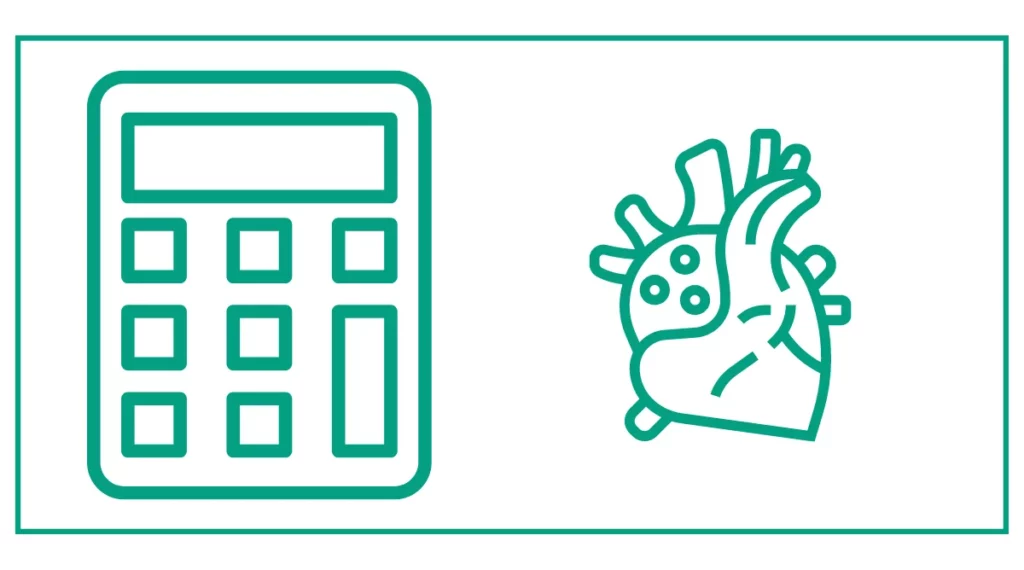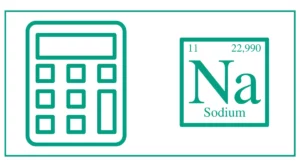Stroke Volume Calculator
The stroke volume calculator helps you calculate the stroke volume, body surface area, cardiac index, and stroke volume index.
Enter your cardiac output, heart rate, height, and weight to calculate the stroke volume and the index.
In case you don’t know, Cardiac output, or CO, is the amount of blood the heart pumps through the systemic circulation in a minute.
CO = SV x HR
Stroke volume (SV) is the blood pumped from the left ventricle during each systolic cardiac contraction.
HR is the heart rate.
Stroke Volume Index (SVI) compares SV to body surface area (BSA), so it can compare how well the heart works to how big a person is.

You might want to calculate the creatinine ratio or carb cycling.
Stroke volume is a crucial metric in assessing heart function and overall cardiovascular health. It refers to the volume of blood pumped out of the left ventricle with each heartbeat. Understanding stroke volume and how to calculate it can provide valuable insights into cardiac performance and help healthcare professionals diagnose and monitor various heart conditions.
What is Stroke Volume?
Stroke volume is defined as the amount of blood ejected from the left ventricle during one contraction. It is typically measured in milliliters (ml) and represents the difference between the end-diastolic volume (EDV) and end-systolic volume (ESV) of the left ventricle. A normal stroke volume for a healthy adult at rest is approximately 70-100 ml.
The Importance of Stroke Volume in Cardiac Function
Stroke volume plays a vital role in determining cardiac output, which is the total volume of blood pumped by the heart in one minute. Cardiac output is calculated by multiplying stroke volume by heart rate. This relationship highlights the importance of stroke volume in overall cardiovascular function.
Factors Affecting Stroke Volume
Several factors can influence stroke volume:
- Preload: The amount of blood returning to the heart
- Afterload: The resistance against which the heart must pump
- Contractility: The strength of heart muscle contraction
- Heart size and muscle mass
- Blood volume and viscosity
- Body position and activity level
Understanding these factors is crucial for interpreting stroke volume measurements and assessing cardiac health.
How to Calculate Stroke Volume?
Stroke Volume Formula
The basic stroke volume formula is:
Stroke Volume (SV) = End-Diastolic Volume (EDV) – End-Systolic Volume (ESV)
This formula represents the difference between the volume of blood in the left ventricle at its fullest (end-diastole) and its emptiest (end-systole).
Using the Stroke Volume Calculator
Our stroke volume calculator provides a simple way to estimate stroke volume based on cardiac output and heart rate. Here’s how to use it:
- Enter the cardiac output in liters per minute
- Input the heart rate in beats per minute (bpm)
- The calculator will automatically compute the stroke volume in milliliters
The formula used in this calculator is:
Stroke Volume (ml) = (Cardiac Output (L/min) * 1000) / Heart Rate (bpm)
This calculation gives an approximation of stroke volume and can be useful for quick assessments or when more precise measurements are not available.
Advanced Stroke Volume Measurement Techniques
While the calculator provides a useful estimate, more accurate measurements of stroke volume can be obtained through various medical techniques:
Echocardiography
Echocardiography uses ultrasound to visualize the heart and measure blood flow. It can provide a more precise determination of stroke volume by measuring the left ventricular outflow tract (LVOT) diameter and the velocity time integral (VTI).
The formula used in this method is:
Stroke Volume = π * (LVOT diameter/2)² * VTI
Thermodilution
This invasive technique involves injecting a cold solution into the right atrium and measuring the temperature change in the pulmonary artery. The resulting curve can be used to calculate stroke volume.
Magnetic Resonance Imaging (MRI)
Cardiac MRI provides highly accurate measurements of ventricular volumes and can directly calculate stroke volume by subtracting ESV from EDV.
Interpreting Stroke Volume Results
Interpreting stroke volume results requires considering various factors:
Normal Range
A typical stroke volume range for adults at rest is 70-100 ml. However, this can vary based on factors such as age, sex, body size, and physical fitness level.
Stroke Volume Index
To account for differences in body size, stroke volume is often expressed as the stroke volume index (SVI), which is stroke volume divided by body surface area. The normal range for SVI is typically 33-47 ml/m².
Changes in Stroke Volume
Variations in stroke volume can indicate different physiological or pathological conditions:
- Increased stroke volume may be seen in well-trained athletes or during pregnancy
- Decreased stroke volume might indicate heart failure, valve disorders, or other cardiovascular diseases
Clinical Applications of Stroke Volume Measurement
Stroke volume measurements have several important clinical applications:
- Assessing heart function and efficiency
- Diagnosing and monitoring heart conditions
- Guiding treatment decisions in heart failure patients
- Evaluating the effectiveness of cardiac medications
- Monitoring patients during and after cardiac surgery
Limitations and Considerations
While stroke volume is a valuable metric, it’s important to consider its limitations:
- Measurements can be affected by factors such as hydration status, body position, and recent physical activity
- Some measurement techniques are invasive and carry risks
- Stroke volume alone doesn’t provide a complete picture of cardiac function and should be considered alongside other metrics
Enhancing Cardiovascular Health
Understanding stroke volume can help individuals and healthcare professionals take steps to improve cardiovascular health:
- Regular exercise to strengthen the heart muscle
- Maintaining a healthy diet and body weight
- Managing stress levels
- Avoiding smoking and excessive alcohol consumption
- Controlling blood pressure and cholesterol levels
Frequently Asked Questions (FAQs)
How is stroke volume related to cardiac output?
cardiac output is the result of multiplying stroke volume by heart rate. For example, if stroke volume is 70 ml and heart rate is 70 bpm, cardiac output would be 4.9 L/min.
Can stroke volume change during exercise?
Yes, stroke volume typically increases during exercise as the heart pumps more efficiently to meet the body’s increased oxygen demand.
How does age affect stroke volume?
Stroke volume tends to decrease with age due to reduced heart muscle elasticity and overall cardiovascular function.
Is a higher stroke volume always better?
Not necessarily. While a higher stroke volume can indicate a stronger heart in athletes, abnormally high values might also suggest certain heart conditions.
How often should stroke volume be measured in patients with heart conditions?
The frequency of measurements depends on the specific condition and treatment plan. Your healthcare provider can advise on the appropriate monitoring schedule.
References
- Gonzalez-Alonso, J., Mora-Rodríguez, R., & Coyle, E. F. (2000). Stroke volume during exercise: interaction of environment and hydration. American Journal of Physiology-Heart and Circulatory Physiology, 278(2), H321-H330.
- Vella, C. A., & Robergs, R. A. (2005). A review of the stroke volume response to upright exercise in healthy subjects. British Journal of sports medicine, 39(4), 190-195.
- Bruss ZS, Raja A. Physiology, Stroke Volume. [Updated 2022 Sep 12]. In: StatPearls [Internet]. Treasure Island (FL): StatPearls Publishing; 2023 Jan-. Available from: ncbi.nlm.nih.gov/books/NBK547686/





